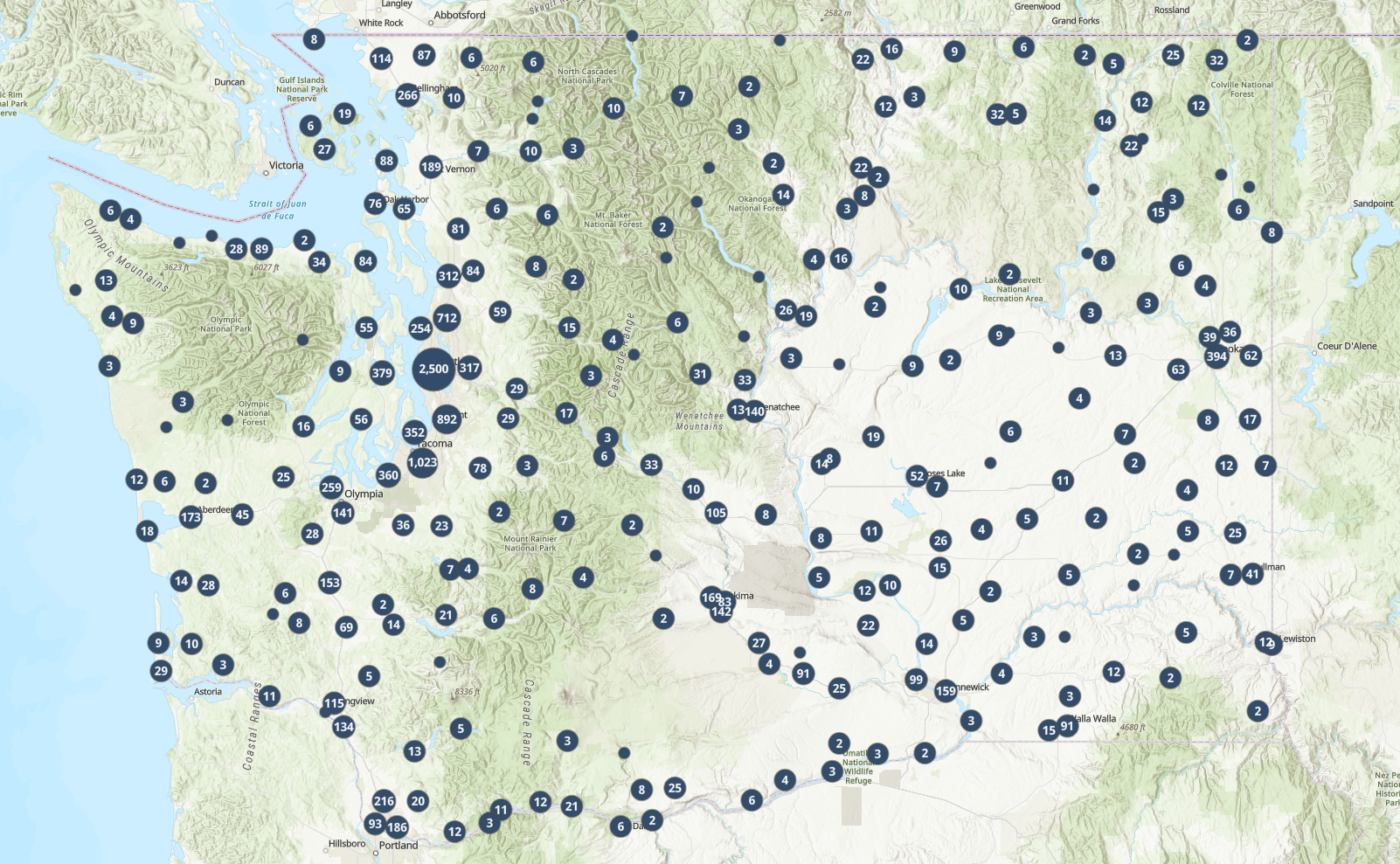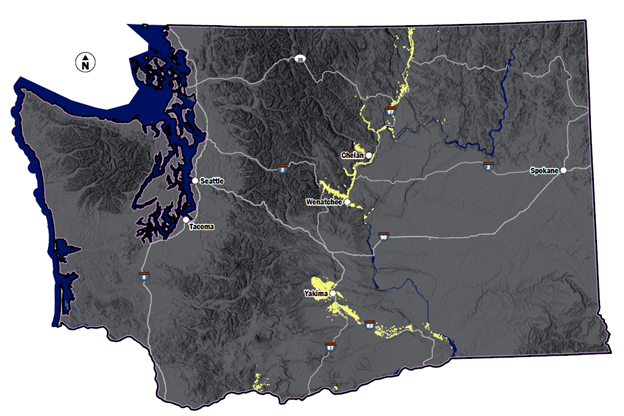The Spic’n Span property in Seattle’s International District has a unique story -- serving as the neighborhood’s only dry cleaning business for over 50 years, until it closed in 2019. It also has a unique story through the lens of a brownfield project. To clean up the chlorinated solvents and mineral spirits left in soil and groundwater from a half century of dry cleaning operations, the project team applied an innovative type of in situ thermal treatment, electrical resistance heating (ERH). ERH heats the shallow soil to an average temperature of 212 degrees Fahrenheit (100 Celsius), until the groundwater starts to literally boil, which then allows the vaporized contaminants to be captured and removed.
A Tailored Cleanup in a Historic Neighborhood
The Spic‘n Span building is in Seattle’s Chinatown-International District and care needed to be taken to follow the neighborhood’s preservation goals during site remediation.
Photo Credit: grego1402, as licensed under Creative Commons
The Spic‘n Span building sits in Seattle’s International Special Review District (ISRD), which is one of Seattle's eight historic districts. The ISRD is a collection of early 20th-century commercial and hotel buildings in the center of this historically Asian American community. It also has the Seattle Chinatown National Register Historic District within it, which helps spotlight the important contributions of the Chinatown/International District area on a national level.
From a pure remedial design perspective, knocking the former dry cleaner building down and excavating the contaminated soil and groundwater directly beneath it likely would have been chosen as the solution at a similar site. But because of the ISRD’s preservation goals, there are established processes for reviewing changes to any existing building within the district. Keeping the existing building as-is during treatment allowed for a smoother approval process with the ISRD.
Not only does ERH treatment result in less ground disturbance compared to a remedial excavation, but contamination is permanently removed and destroyed in the subsurface without requiring excavation and off-site disposal at a landfill. It can target a very specific treatment depth interval, without the need to remove overlying uncontaminated fill or deal with excavation shoring or dewatering. ERH treatment can also potentially reach areas where excavation isn’t possible, such as underneath the sidewalk. The advantages of ERH for this specific site made it a clear winner for the project team.
What is Electrical Resistance Heating?
ERH runs electrical current through arrays in shallow soil, the current heats the soil, which in turn heats groundwater to a boiling point where it vaporizes. The vapors are captured and treated and then safely discharged.
Photo Credit: TRS Group, Inc
ERH is a relatively new remediation technology that can be the right fit for certain cleanup sites. It involves passing an electrical current through moisture in the soil between an array of electrodes. As the current flows through the moisture in soil pores, the resistance of the soil produces heat.
The heat strips the volatile contaminants out of the soil and vaporizes groundwater and non-aqueous phase liquid (NAPL), if present. steam and contaminant vapors produced by the heat are captured by subsurface vapor extraction systems, conveyed to the surface, and then treated for permitted discharge. ERH is a highly effective remediation solution for contaminated soil, as it is able to reduce contaminated soil and groundwater concentrations up to 99 percent. It has been successfully implemented at over 300 sites worldwide.
Fall 2021 temperature reading of soil cores, still at 130 F, from the active ERH operation phase of the project cleanup.
Photo Credit: Aspect Consulting
The Spic‘n Span site was a good fit for this type of treatment, as ERH would eliminate the majority of contamination without having to disturb the building. However, care had to be taken to confirm that the subsurface was the right makeup for ERH. For instance, the soil type dictates the soil resistivity, which determines how readily the soil will conduct electricity—a low resistivity will require large amounts of electrical current, and a high resistivity will require high voltages. The fill and historical marine deposits (sandy silt, stiff silt and medium dense silty and gravelly sands) at Spic‘n Span fell in the sweet spot of optimal ERH performance.
Another consideration for ERH application is high concentrations of organic carbon in soil, which can cause chemicals to stick to the soil and not evaporate easily and ERH is less effective for heavy petroleum compounds. Lastly, ERH demands careful logistical planning and constant and methodical monitoring to confirm that the heat generated doesn’t affect underground utilities (especially plastic ones) or change the soil properties resulting in damage to the structural integrity of the building. All of these considerations were closely evaluated before and during the ERH implementation at the Spic’n Span site.
Plugging In 52 Electrodes to Power Cleanup
Over 50 electrodes and 40 vapor recovery wells were installed across the 0.3-acre site.
Photo Credits: Aspect Consulting
Aspect led the remediation evaluation and technology selection, working closely with the City’s ISRD team to confirm that proper care would be taken during the cleanup selection. Aspect partnered with the TRS Group, who are ERH specialists, to design and build the system at the property. Bench scale testing was conducted to confirm the effectiveness of ERH for site soils and contaminants, and provide the basis for the full-scale design.
The Site was divided into four areas based on depth of contamination and 52 electrodes – 15 feet apart – were installed into the shallow subsurface. Over 40 vapor recovery wells along with a vapor recovery system were installed to capture and convey the permitted discharge. A temporary transformer and power poles were installed by Seattle City Light to power the ERH system. Once the system was in place, the team was ready to flip the switch.
Treatment Goals Achieved
At system shutdown in early 2022, the average temperature in shallow soil was 97 degrees Celsius in the focused treatment area.
Figure Credit: Aspect Consulting
The ERH system powered up in August 2021. Over about 6 months of operation, the cleanup action removed approximately 800 pounds of air phase petroleum hydrocarbons and 42 pounds of perchloroethylene. Once confirmation soil samples were below cleanup levels, the system was shut down and the post-treatment “cool-down” period was initiated. Fast forward to 2023 and, following 12 months of post-treatment monitoring, contaminant concentrations detected on the property are below cleanup levels.
ERH is a remediation solution that is suited for very specific brownfield situations. In this case, the restrictions of having to leave the building intact and treat contamination in place led to the selection of this innovative cleanup solution. Unique site challenges require unique solutions, which is what makes our job so exciting as environmental consultants.
Contact Principal Engineer Jeremy Porter or Project Engineer Delia Massey for more information.































